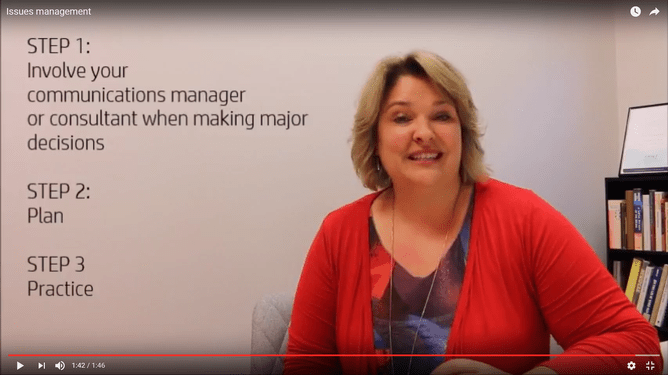You’ve got issues – sort it!
A lot of organisations are fortunate enough to avoid crises. But, when it comes to issues no organisation is immune.
Every single organisation has issues. However, every organisation does not have a robust system in place to manage communications around issues.
Before we get into issues management and what every organisation should be doing within this discipline, let’s first look at the difference between a crisis and an issue. Because I think a lot of organisations erroneously lump crises and issues together in one basket. But they are quite different kettles of fish.
| A Crisis … | An Issue … | |
| Often happens without warning | Is a warning sign of a potential crisis | |
| Inevitably happens outside business hours | Can be controlled during business hours | |
| Gives you little time plan | Gives you some time to plan | |
| Requires you to act immediately | Allows you time to test scenarios and mitigation |
Examples of issues could be:
- Impending restructuring and redundancies
- Planned price hikes
- Planned discontinuation of products
- Employee fraud discovered in the workplace
- Health and safety issue potentially affecting the public
- Upcoming business changes that could lead to employee or public backlash
- Planned company announcements that could garner social media negativity
Now that we’ve defined what an issue is, what is issues management?
Issues management is about putting a plan in place that focuses on preventing that issue from escalating into a crisis. At the heart of the plan, the goal is to protect your company’s reputation.
There are three essentials every organisation can do to set themselves up to implement a best-practice approach to issues management:
- Involve communications at the decision table
The first step to managing issues is to ensure your in-house communications manager or consultant is sitting at the decision table. As business decisions occur, it’s incredibly important that your communications advisor is included in those discussions from the start. That’s because, more so than any other person on your leadership team, your communications advisor applies a ‘reputation lens’ to every business choice you make.
We are trained to spot potential issues early, point out the potential risks and work with the leadership team to create a mitigation strategy – including public actions and comments when you need them – that will keep your reputation intact.
Ask yourself: Is my communications advisor overtop the business? Are they in the loop early and often? Are we providing our communications advisor the opportunity to apply a ‘communications lens’ to the business decisions we’re making?
2. Plan
Odds are that your leadership team or board is continually identifying the issues in their business. In fact, most organisations keep a risk register.
Those issues that could lead to a reputational risk, need a communications plan that outlines: the issue, audiences it will affect, potential audience reactions, key messages, objectives and measures, tactics you will use if/when you get to the point of needing to communicate. And that plan will evolve and change as further details emerge over time.
Ask yourself: Do I have a robust issue management planning structure in place? Do I have a communications plan for the issues I currently have in my business?
2. Practice
Issues management as a discipline is not something that ‘communications people do.’ Rather, it is essential that your leadership team can identify issues, understand the reputational risks to your organisation if not handled well, and recognise the importance of communications planning to mitigate risks.
If you could use some upskilling, be intentional in developing exercises and scenarios you run through with your team- practise, practise, practise. And have your communications advisor offer learning tools to help your key leaders hone their issues management skills.
Ask yourself:Is our organisation managing issues at a best-practice level? If not, how can we upskill and how can our communications advisor help?
